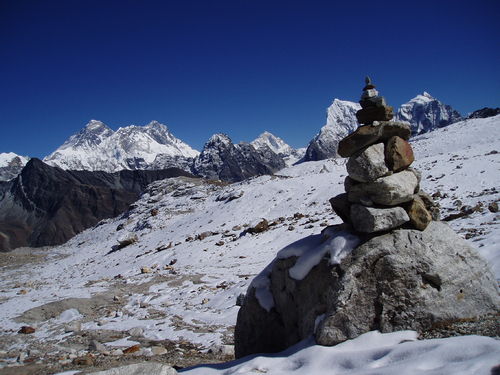Program of the Kathmandu 2012 Workshop
Révision datée du 10 février 2012 à 19:34 par Asavin (discussion | contributions) (→Speakers and titles of the talks)
Bodhnath Stupa
Schedule (will be modified)
| Monday April 30 | Tuesday May 1 | Wednesday 2 May | Thursday 3 May | Friday 4 May | |
|---|---|---|---|---|---|
| 9:00 - 9:30 | Pal | Broer | Graovac | Minot | |
| 9:30 - 10:00 | Scuseria | Daul | Martin Pendas | Markovits | |
| 10:00 - 10:30 | Bultinck | Helgaker | Cardenas | Chen | |
| 10:30 - 11:00 | Break | Break | Break | Break | |
| 11:00 - 11:30 | Okopinska | Yang | Wesolowski | Fuentealba | |
| 11:30 - 12:00 | Cioslowski | Grabowski | Causa | Witek | |
| 12:00 - 12:30 | van Aggelen | Baer | Frauenheim | Derat | |
| 12:30 - 13:00 | Piris | Ernzerhof | Ayers | Salahub | |
| 13:00 - 15:00 | Lunch | Lunch | Lunch | Lunch | |
| 15:00 - 15:30 | Borgis | Excursion to Patan | Delgado Barrio | Excursion to Bodhnath | |
| 15:30 - 16:00 | Dobson | Chan | |||
| 16:00 - 16:30 | Welcome | Kronik | Gross | ||
| 16:30 - 17:00 | Carniato | Görling | |||
| 17:00 - 17:30 | Opening | Break | Break | ||
| 17:30 - 18:00 | Malrieu | Hiberty | Calaminici | ||
| 18:00 - 18:30 | Harris | Braida | Russo | ||
| 18:30 - 19:00 | Mukherjee | Schwerdtfeger | Chermette | ||
| 19:00 - 19:30 | Schwarz | Liu | Discussions / Posters | ||
| 20:00 - 20:30 | |||||
| 20:30 - | Conference dinner |
Speakers and titles of the talks
- Helen van Aggelen: Variational optimization of second order density matrices for chemistry
- Paul Ayers: What Should One Do When Electronic Structure Methods Aren’t Good Enough? Machine-Learning Methods for Molecular Properties
- Roi Baer: Dogmatic and Pragmatic Spirits in Density Functional Theory
- Daniel Borgis: Classical Density Functional Theory and its Application to Chemistry
- Benoit Braida: Recent trends in ab initio Valence Bond methods
- Ria Broer: First principles Studies of Magnetic Interactions in Molecules and Solids
- Patrick Bultinck: Chemical verification of new quantum chemical methods
- Patrizia Calaminici: Finite Systems Properties from Born-Oppenheimer Molecular Dynamics
- Carlos Cardenas: Navigating the Hard-Soft Acids-Bases Principle
- Stephane Carniato: How RIXS and theory can be combined to measure the electronegativity
- Mauro Causa: Locality and non-locality. It is possible to cut a system governed by quantum mechanics
- Garnet Chan: Quantum embedding theories
- Guanhua Chen: Penetrating a potential barrier one hundred percent
- Henry Chermette: The Gradient-Regulated Connection of Generalized Gradient Exchange Functionals: interest and limitations
- Jerzy Cioslowski: All you always wanted to know about many-electron harmonium atoms
- Claude Daul: Prediction of single-molecular magnets with open d- or f-shells by theoretical calculations
- Gerardo Delgado Barrio: Theoretical studies of Helium clusters doped with diatomic molecules
- Etienne Derat: Models for complex bioinorganic systems: a tool for future design?
- John Dobson: Dispersion Forces
- Matthias Ernzerhof: Non-Hermitian quantum mechanics and density functional theory
- Thomas Frauenheim: DFTB - Recent methodological extensions, applications and challenges
- Patricio Fuentealba: The richness of the dynamics of clusters and molecules
- Andreas Gorling: The adiabatic-connection dissipation-fluctuation theorem as route to a new generation of density-functional methods: perspectives and challenges
- Irek Grabowski: Impact of the correlation effects on the KS DFT potentials, energies and densities
- Ante Graovac: On topology versus geometry in molecules
- Frank Harris: Fully Correlated Wavefunctions for Small Atoms
- Hardy Gross: Exact factorisation of the electron-nuclear wave function: A fresh look on potential energy surfaces and the semi-classical treatment of nuclei
- Trygve Helgaker: The universal density functional in external magnetic field
- Philippe Hiberty: Valence Bond Theory and Reactivity: Correlation Between the Diradical Character of 1,3-Dipoles and their Reactivity Toward Ethylene and Acetylene
- Leeor Kronik: Understanding photoelectron spectroscopy from first principles - progress and challenges
- Wenjian Liu: Relativistic correlation
- Jean-Paul Malrieu: Scale changes and reduction of the degrees of freedom in wave-function calculations
- Alexis Markovits: The Active Role of the Surface in Heterogeneous Catalysis
- Ángel Martín Pendás: Fluctuation of electron populations and chemical bonding
- Christian Minot: Reducibility of metal oxides
- Debashis Mukherjee: Reflections on interplay of dynamical and static correlations : paradigms and approaches
- Anna Okopinska: Entanglement in natural and artificial atoms and molecules
- Sourav Pal: Coupled cluster theory: stationary or non-stationary?
- Mario Piris: Can NOFT bridge the gap between DFT and WFT?
- Nino Russo: How to choose the exchange-correlation potential for different systems or processes: menu à la carte ou menu du jour ?
- Dennis Salahub: Electron transfer and other reactions in proteins – towards an understanding of the effects of quantum decoherence
- W.H.E. Schwarz: Descriptive and Explanative Concepts of Theory for Chemistry
- Peter Schwerdtfeger: Beyond the Periodic Table – Going for the Superheavy Elements
- Gustavo Scuseria: Symmetry breaking & restoration
- Tomasz Wesolowski: Joining seamlessly microscopic and macroscopic levels of description of matter: challenges and perspectives for modelling methods based on Frozen-Density Embedding Theory
- Henryk Witek: Exact solution of Schrodinger equation for helium: how far are we?
- Weitao Yang: Fukui functions: Analytic evaluation and new exact conditions from the flat plans.
Posters
Deba B. Khadka: Optical model calculation of the total Penning ionization cross sections of Ne(3P1) by O2
Abstracts
The abstracts will be uploaded soon
Mt Everest, Lhotse and Cholatse seen from Renjo La

